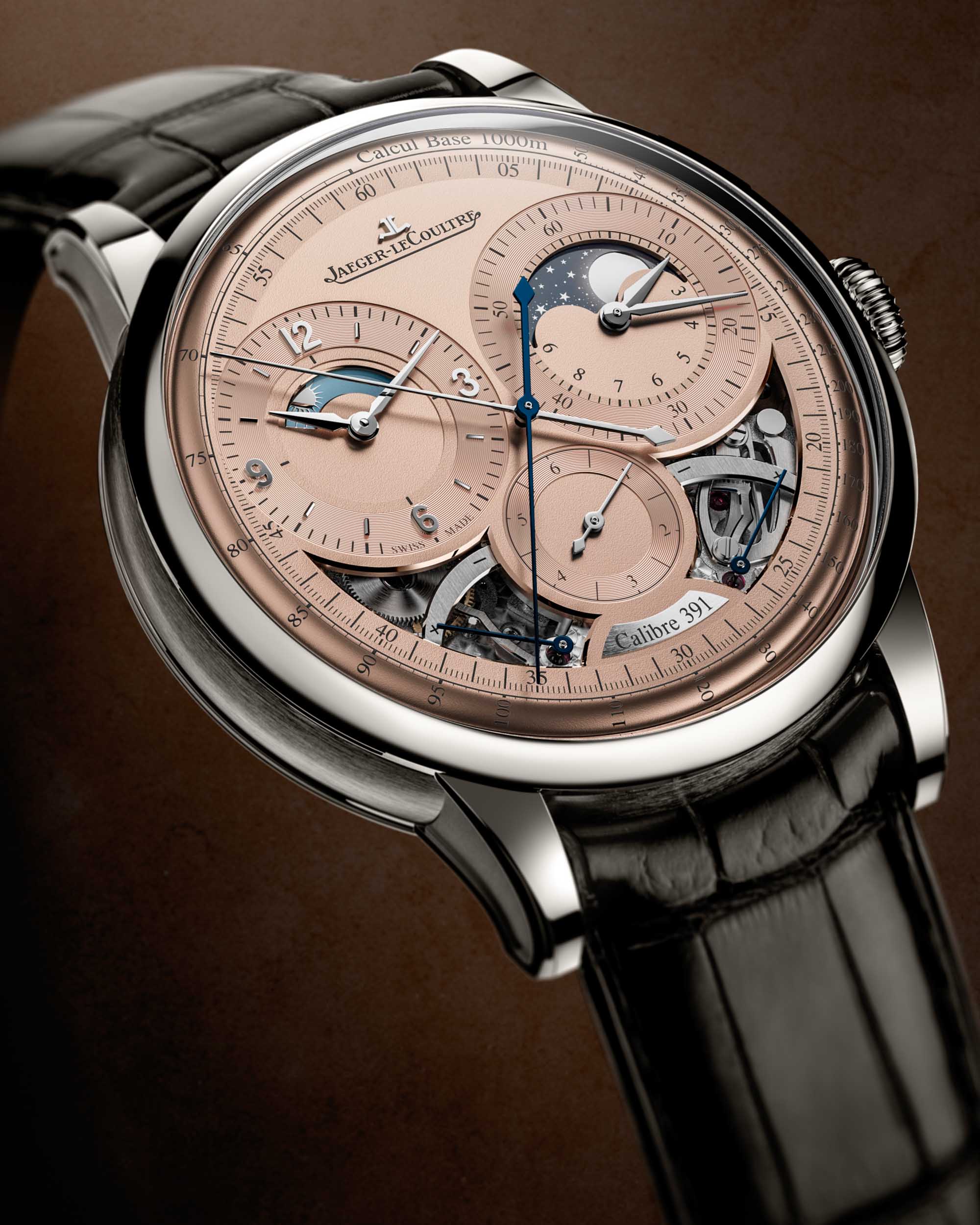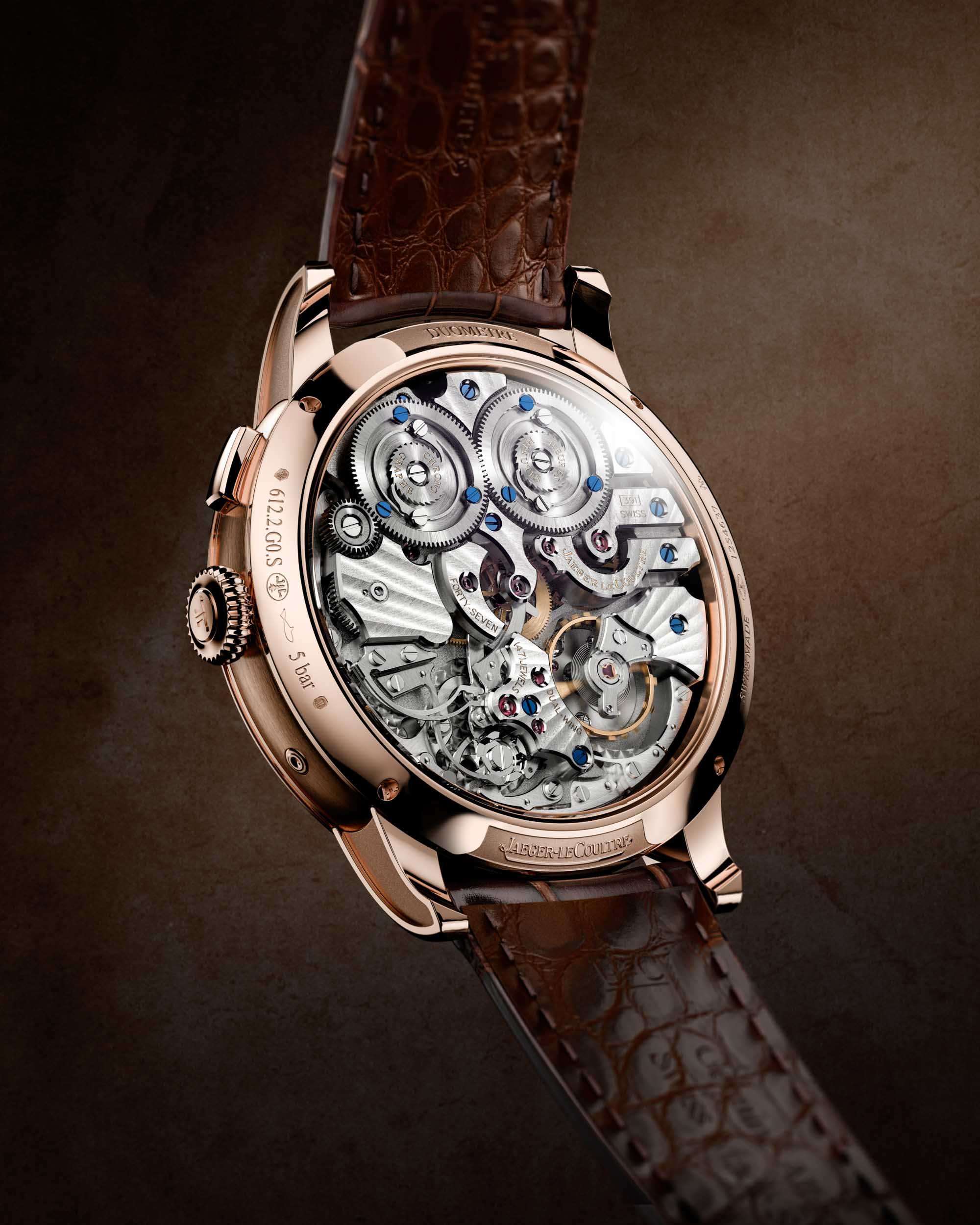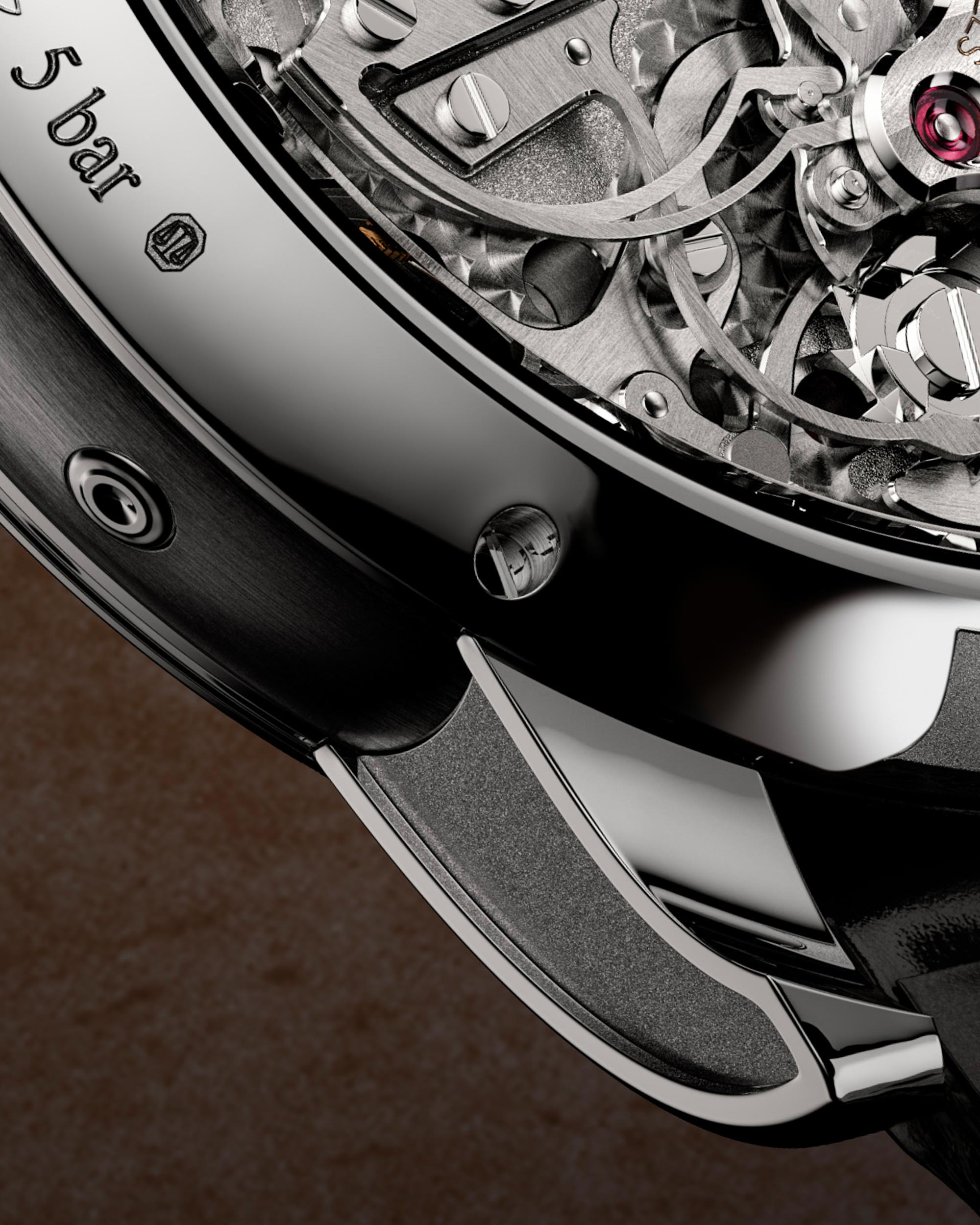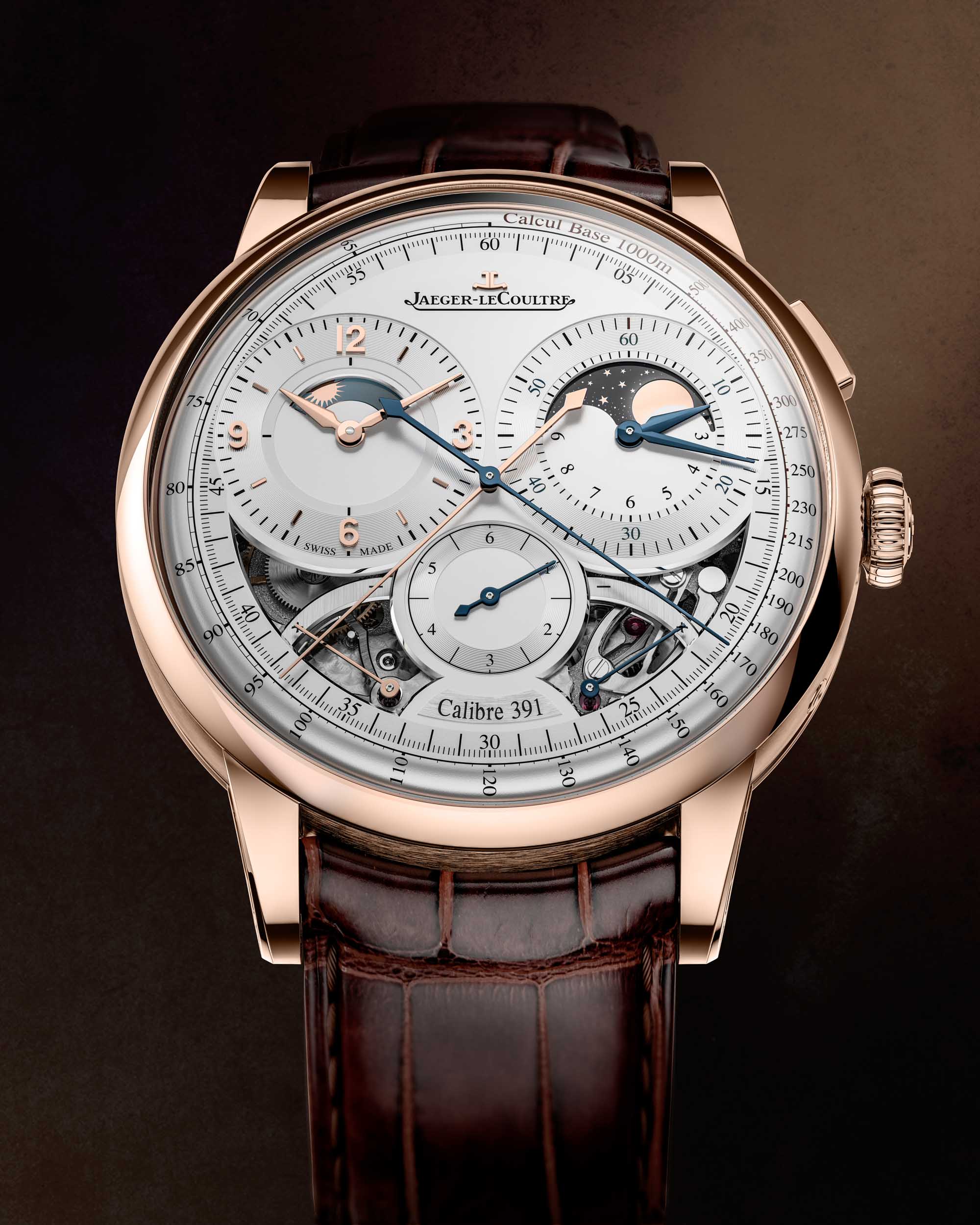
For Watches and Wonders 2024, Jaeger-LeCoultre has unveiled a significant update to one of its more technically impressive modern collections, the Duometre. These twin-barrel powerhouse watches have been on the Maison’s back burner for quite a while, but it looks like the wait was worth it. JLC has cooked up a healthy update that feels fresh and new while retaining the Duometre’s defining features. As part of the new collection and, for the first time, Jaeger-LeCoultre has combined the chronograph and moon phase complications into a single Duometre watch, the Duometre Chronograph Moon.
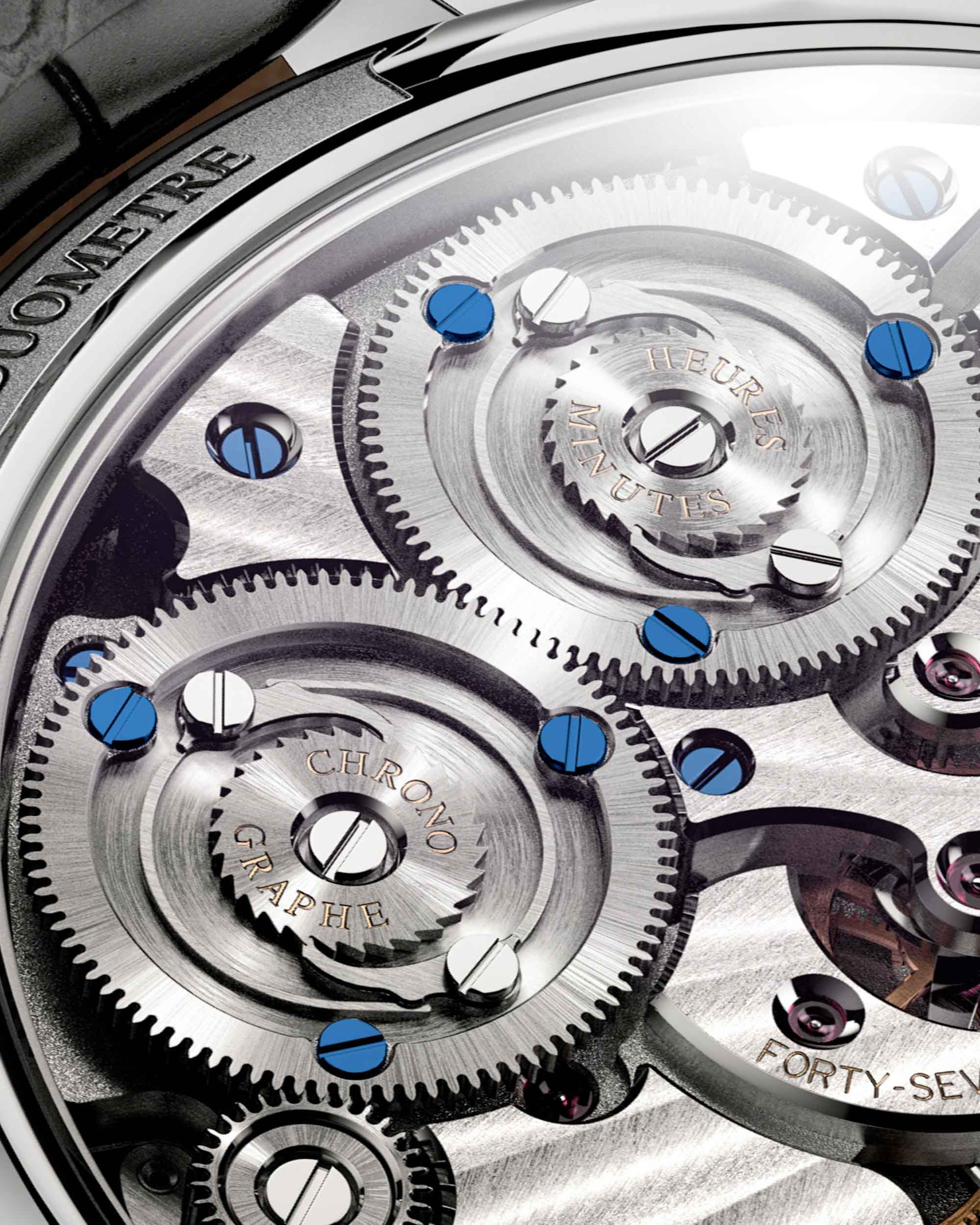
The Duometre originally debuted in 2007. This model took a twin barrel pocket watch concept from 1881 and integrated it into an entirely new watch. Its name is derived from the two mainspring barrels, but instead of simply extending or increasing a power reserve to make up for power drawn by complications, the two barrels work separately and harmoniously to maintain accurate timekeeping and power the complications. Each barrel powers an independent gear train. One ensures constant power to the escapement, while the other ensures constant power to any complications. Constructing the movement this way eliminates any changes in accuracy that can come from decreased power output when activating high-draw complications.
You may be thinking, “Why do the gear trains need to be separate? Plenty of watches do the same with only one,” and you’d be right. However, we’re talking high watchmaking here. It wouldn’t be high watchmaking if it didn’t find an incredibly complicated way of solving a fairly minimal problem, and of course, do it with jaw-dropping finishing and execution.

The new Jaeger-LeCoultre Duometre Chronograph Moon comes in a slightly redesigned case and only in 18K pink gold or platinum for the time being. The watches measure 42.5mm in diameter and 14.2mm thick—not bad considering the complexity of the new Calibre 391 inside, but more on this later. The case shape is inspired by 19th-century savonette pocket watches. In French, savonette translates to a small disc of soap with smooth rounded edges and contours that can be held in the palm of the hand. This shape is most evident when viewed from the side, and I expect it to be even more noticeable on the wrist. A domed sapphire crystal on top and screw-in caseback with a sapphire exhibition window add to this pebble shape. Despite its resemblance to an ocean-weathered stone or a well-used piece of soap, these watches are only rated to 50 meters of water resistance.
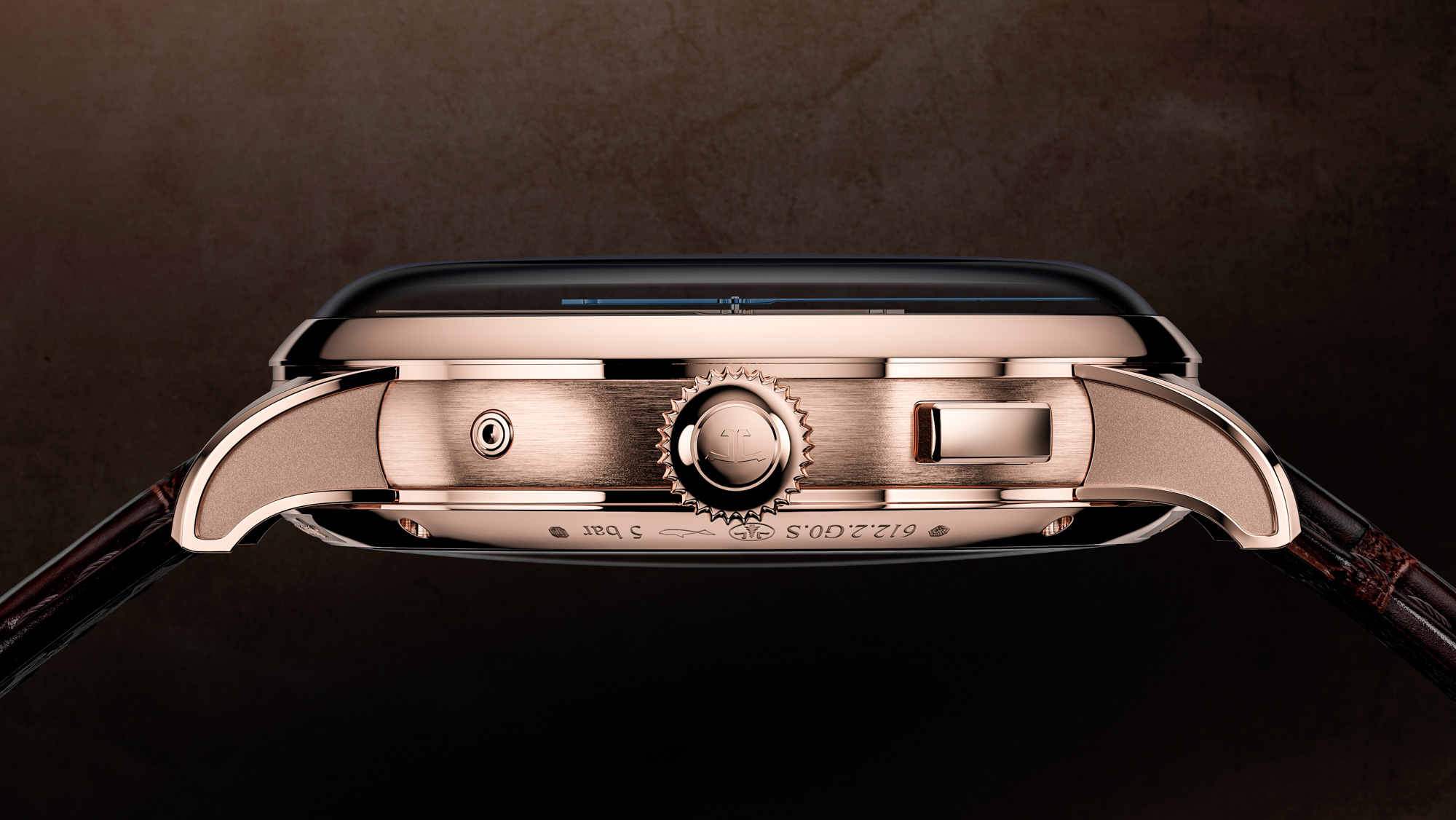 While the case is predominantly polished, large reliefs are found on the sides of the case and lugs, each of which are separate parts of the 34-component case. Multicomponent cases are nothing new to JLC, and constructing the Duometre this way allows for a wider variety of finishing techniques to be applied. A matte frosted texture fills the lateral voids on the lugs, while a deep-grained brushing wraps the entirety of the midcase. When assembled, the case is a dynamic modern take on a classically elegant shape that, admittedly, really tickles my fancy. The 3 o’clock side of the case houses all functions, with a polished pillbox crown at 3 o’clock, a rectangular chronograph pusher at 2 o’clock, and an inset pusher at 4 o’clock for moon phase adjustments.
While the case is predominantly polished, large reliefs are found on the sides of the case and lugs, each of which are separate parts of the 34-component case. Multicomponent cases are nothing new to JLC, and constructing the Duometre this way allows for a wider variety of finishing techniques to be applied. A matte frosted texture fills the lateral voids on the lugs, while a deep-grained brushing wraps the entirety of the midcase. When assembled, the case is a dynamic modern take on a classically elegant shape that, admittedly, really tickles my fancy. The 3 o’clock side of the case houses all functions, with a polished pillbox crown at 3 o’clock, a rectangular chronograph pusher at 2 o’clock, and an inset pusher at 4 o’clock for moon phase adjustments.

Now onto the star of the show: the new Calibre 391. This highly complex movement was designed from scratch to ensure both moon phase and mono-pusher chronograph complications were fully integrated into the movement. Each of the two barrels maintains 50 hours of power reserve. They are wound individually through the crown by rotating in opposing directions. The power reserve of each barrel is indicated over a skeletonized portion of the dial at 5 o’clock and 7 o’clock. The Cal. 391 features stunning Cotês de Geneva striping radiating out from the beating heart of the movement, the balance. High polished bevels delicately trace the edges of the bridges, which stand proudly out from the mix of frosted and perlage finishing mainplate below. Movements with architecture like this are always a treat and give me the urge to wear the watch upside-down.
The Cal. 391 isn’t all looks, it packs a solid punch of horological complexity offering an array of information to display. The full list of functions includes traditional hours, minutes, and seconds, along with a day-night indicator, moon phase, twin power reserve indicators, and a chronograph that displays up to 12 hours of continuous counting with 60 minutes, 60 seconds, and 1/6th of a second accuracy. The 1/6th of a second counter, formally known as a seconde foudroyante hand, beats six times each second for a high speed and enticing dance on its subdial above 6 o’clock when the chronograph is running.

Of course, with all this information, it could very easily be displayed illegibly. Thankfully, legibility has always been a forte of the Duometre, and it still is in 2024. A wide powder-textured dial is segmented to maximize legibility and slopes gently at the edges. On the left side of the dial is your standard time-telling subdial with applied indices and an arching day-night display aperture. The right side houses the moon phase and chronograph functions, while the seconde foudroyante hand receives its own subdial just above 6 o’clock, and is flanked by two open-worked sections that result in a(probably coincidentally) smiling face motif.
All three subdials feature fine concentric circles, or snailing, to aid in legibility and are slightly recessed below the primary dial surface. Standard time telling is treated with precious metal-applied indices, while the chronograph counter is printed. You may do a double take when you notice two centrally mounted needle hands and think this is a rattrapante chronograph, but it is not. One of the centrally mounted hands is the chronograph seconds hand. It is blued on both watches, and all chronograph hands receive the treatment on the pink gold iteration. The standard running seconds hand is also centrally mounted and matches the case. The chronograph is calibrated to measure distance over time with a nicely round 1000m base for measurements around the periphery. Overall, as complicated chronograph dials go, this is pretty legible, symmetrical, and pleasing to the eye. To top it off the Jaeger-LeCoultre is printed in the space at 12 o’clock below an applied “JL” logo, and a plaque with “Calibre 391” is found at 6 o’clock if you happen to forget.

As always, dial colors have been carefully selected to accent the precious metal cases. A rich shimmering copper-colored dial is found in the platinum Duometre Chronograph Moon while a shimmering white opaline dial is paired with the 18K pink gold iteration. Appropriately elegant matching alligator straps are mounted between the lugs with large scales on the exterior and small alligator scale lining on the interior. From initial images, it looks like a standard pin buckle is used, which is fine by all means, but I would like to see a deployant buckle for a premium release like this. In reality, if the buckle is my only complaint, Jaeger-LeCoultre has done a smashing job with the Duometre Chronograph Moon.

You can tell Jaeger-LeCoultre took its time updating the Duometre. The hallmark design features remain while modern additions are complementary rather than the main focus. The collection is as technically impressive as ever before and certainly worthy of the brand’s unofficial title of “The Watchmaker’s Watchmaker.” Understandably, these highly complicated precious metal watches come with a correspondingly high price tag. The Jaeger-LeCoultre Duometre Chronograph Moon in Pink Gold (ref. Q622252J) is priced at $70,000 USD, and the Jaeger-LeCoultre Duometre Chronograph Moon in Platinum (ref. Q622656J) is priced at $86,000 USD. Learn more about Jaeger-LeCoultre and its 2024 Watches & Wonders releases at the brand’s website.


